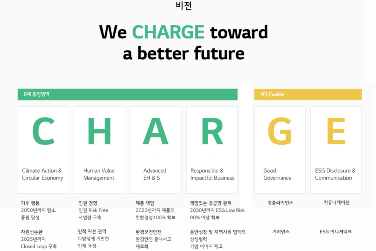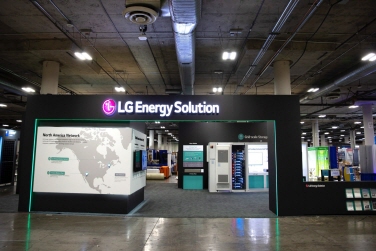Extreme weather events are becoming more common as a result of global warming. The international community is now urging governments and global corporations to develop more robust responses and take immediate action.
Under the common goal of limiting global average temperature rise to 1.5 °C above pre-industrial levels, LG Energy Solution, a global leader in the battery industry, has proposed a concrete roadmap to achieve carbon neutrality by 2050 in three stages.
*Carbon Neutrality: The goal of reducing actual emissions of greenhouse gases, the primary cause of global warming, to zero.
LG Energy Solution’s Roadmap to Carbon Neutrality
The primary source of greenhouse gases is the generation of electricity. Greenhouse gases are emitted indirectly through thermal and electrical energy used to manufacture batteries. Emissions are also produced during the combustion of fuels such as LNG and gasoline. To reduce these emissions, we must convert the electricity used in battery manufacturing to renewable energy and reduce energy consumption by switching to alternative energy sources.
Step One: Achieve RE100 and EV100 by 2030
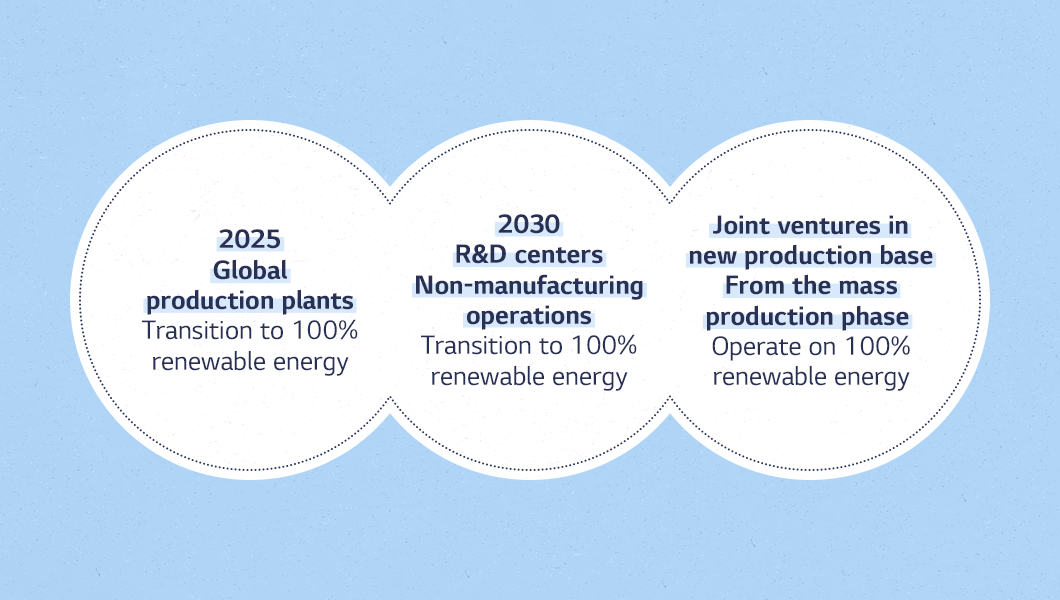
RE100, which stands for “Renewable Electricity 100%,” is an international campaign to switch all the electricity businesses use to renewable energy by 2050. LG Energy Solution was the first battery company to join RE100 in 2021, and it also signed the EV100 agreement to convert 100% of its business vehicles to electric vehicles. It has committed to reaching RE100 and EV100 by 2030, two decades earlier than its original target.
Today, its plants in Wroclaw, Poland (LGESWA) and Michigan, USA (LGESMI) have achieved 100% renewable energy conversion. Its plants in Ochang, Korea, and Nanjing, China, are also increasing their use of renewable energy.
Step Two: By 2040, LG Energy Solution’s operations will be carbon neutral.
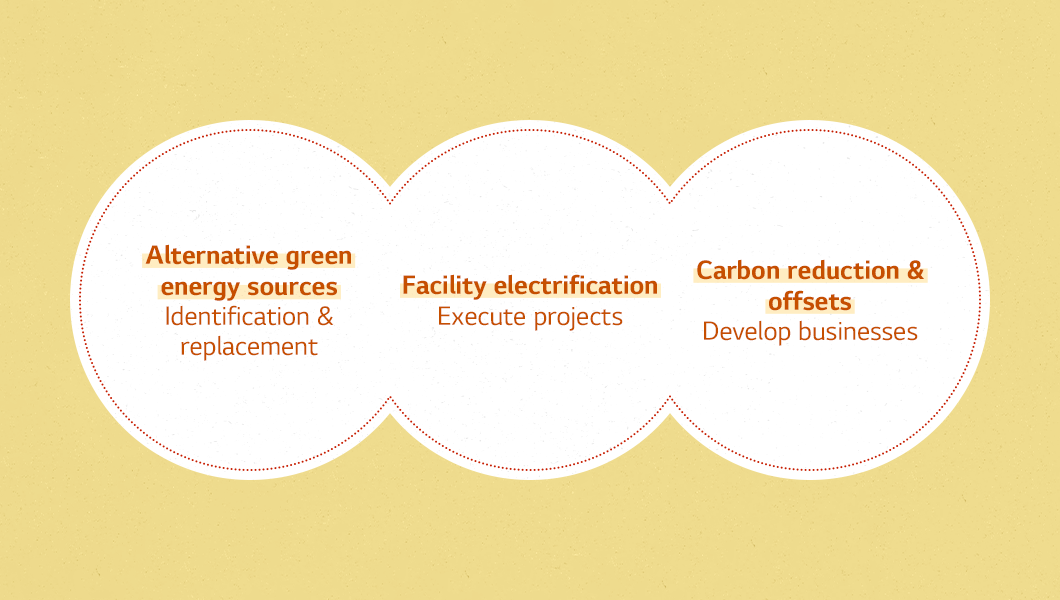
To achieve carbon neutrality in its own operations (battery manufacturing, *scopes 1 & 2) by 2040, fuels and electricity must also be converted to environmentally friendly energy sources such as biomass and hydrogen.
In response, LG Energy Solution will seek alternative, eco-friendly energy sources to optimize energy consumption. It also intends to promote facility electrification, such as switching from fuel to electric boilers, and consider carbon-offsetting activities, such as tree planting, to create forests.
*Scope 1: GHGs emitted directly from company-owned and controlled resources.
*Scope 2: GHGs emitted indirectly by the company.
Step Three: Achieve Carbon Neutrality Across the Entire Value Chain.
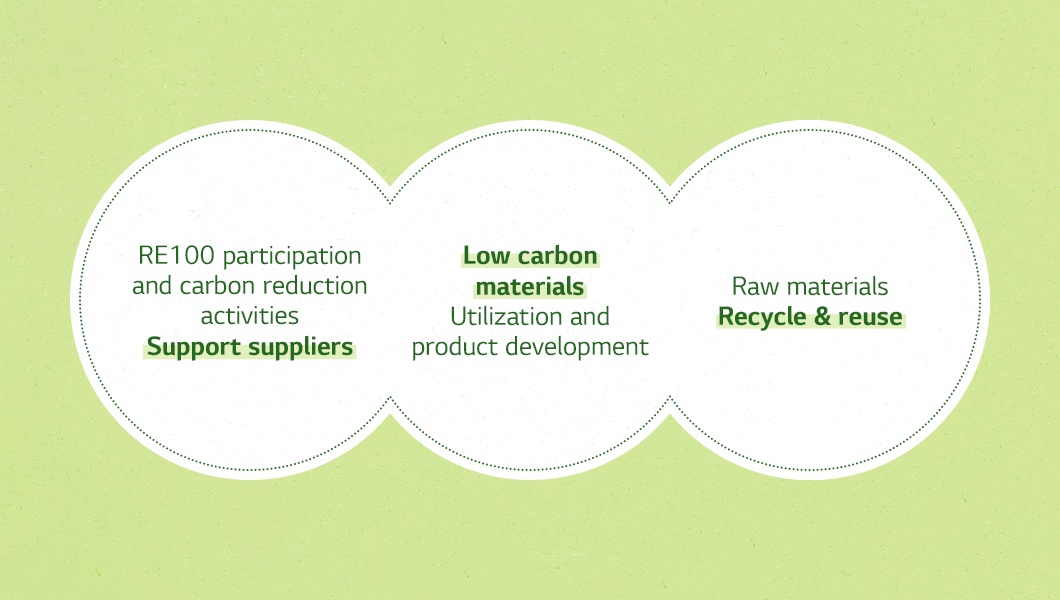
It aims to achieve carbon neutrality for its batteries by 2050. According to its Life Cycle Assessment of batteries, more carbon is generated during the production of raw materials for batteries than during the battery manufacturing process, implying that the key to achieving carbon neutrality is how much carbon emissions of raw materials can be reduced.
LG Energy Solution will monitor carbon emissions throughout the value chain, use more recycled raw materials rather than mining materials, and work to create a virtuous cycle for battery raw materials. Furthermore, it will encourage its suppliers to participate in RE100 and carbon reduction activities.
Goals Beyond Carbon Neutrality
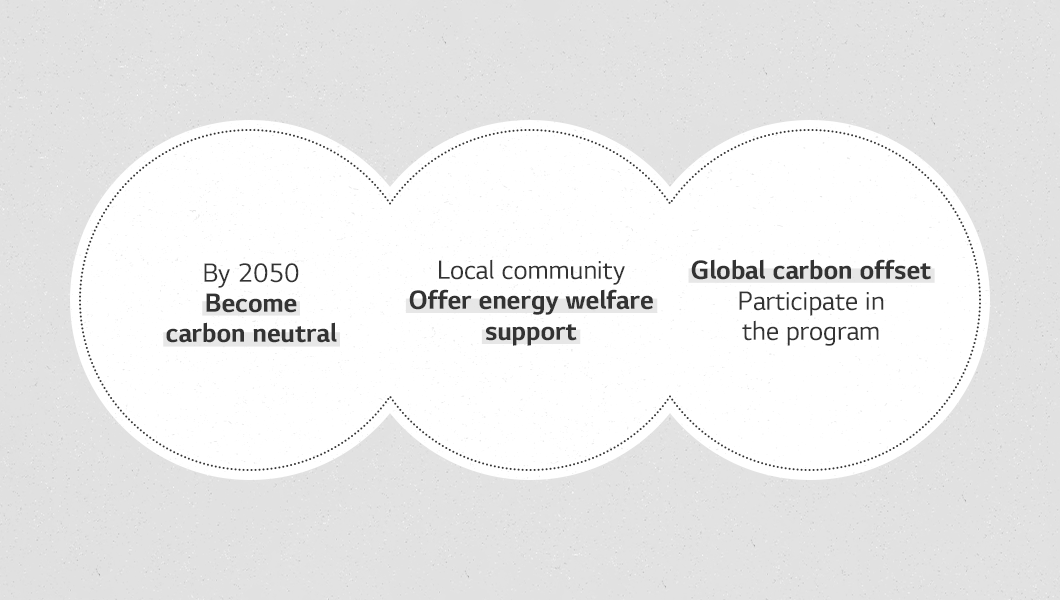
The LG Energy Solution won’t end there. It will support local communities’ energy welfare by installing renewable energy generation facilities and ESS near its domestic and international business sites, developing carbon offset programs, and assisting vulnerable regions affected by climate change.
Eventually, it will strive beyond carbon neutrality and become carbon negative.
